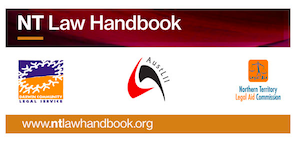-- JonathanMo - 14 Sep 2015
Infringements and offences
The DA provides that a primary infringement occurs if a person, without authority, makes or offers to make a product that is identical to, or substantially similar in overall impression to, the registered design [DA s.71(1)(a)]. Infringement, being a secondary infringement, also occurs if a person imports into Australia such a product for sale or for trade or business, or otherwise sells, hires, uses or keeps such a product for trade or business [DA s.71(1)(b)-(e)]. Under section 19(4) of the DA, the court must apply the standard of the 'informed user', being a person familiar with the product to which the design relates. This is intended to produce a more objective test for infringement, than that which applied under the old Act, and is also intended to focus more on similarities, rather than differences. The previous test of 'fraudulent or obvious imitation' [old Act s.30(1)] was interpreted narrowly, so that if there were differences (eg of dimension) between the original and the alleged infringing design, infringement would not be found to exist. See Dart Industries Inc v Decor Corporation Pty Ltd [1989] FCA 49; (1989) 15 IPR 403 concerning 'obvious imitation', in which the court said that there was no 'fraudulent' imitation, because 'the evidence does not (therefore) support a finding that the respondent knowingly, consciously or deliberately based its design upon the registered design'. In Wanem Pty Ltd v Tekiela [1990] FCA 527; (1990) 19 IPR 435 at 440, the Federal Court accepted six propositions in respect of what might constitute an infringement: (i) first impressions are important in determining whether there is an infringement of a design;
(ii) an obvious imitation is one which is not the same as the registered design but is a copy apparent to the eye notwithstanding slight differences;
(iii) the question must be looked at as one of substance and by examining the essential features of the design;
(iv) a closer correspondence between the registered design and the alleged infringing design is necessary to satisfy the test of obvious imitation than that of fraudulent imitation;
(v) precise mathematical comparisons or matters of measurements or ratios ... are not to be applied as the test of infringement; appearance to the eye is the critical issue;
(vi) questions of infringement must not be determined by a narrow or overly technical approach in comparison between the design and the alleged infringement, lest the registration be sapped of its worth to the registered owner.
See also Koninklijke Philips Electronics NV v Remington Products Australia Pty Ltd [2000] FCA 876; (2000) 100 FCR 90; 48 IPR 257 and Elconnex Pty Ltd v Gerard Industries Pty Ltd [1991] FCA 567; (1992) 32 FCR 491; 22 IPR 551.
Relief available includes an injunction subject to such terms as the court may think fit, and - at the option of the plaintiff - damages or an account of profits [DA s.75(1)]. It may also award such additional damages as it considers appropriate depending on the flagrancy of the infringement [DA s. 75(3)].
A court may also grant relief against unjustified threats of infringement.
The DA includes a 'right of repair' defence in section 72 of the new legislation for spare parts. This provides a defence against infringement of a design where a component part embodying a registered design is to be used for genuine repair purposes, or as a spare part. The onus is placed on the design owner to show that the alleged infringer knew the part sold was not for the purpose of genuine repair. The right of repair defence was due to be reviewed in 2005.
Offences include the following acts: - causing false entries to be made in the Designs Register [DA s.131]
- false representation that a design is registered [DA s.132]
- false representation concerning any association between a business and the Designs Office [DA s.133]
- failure to comply with a requirement of the Registrar of Designs, including appearing as a witness or producing documentation.
 Copyright © by the contributing authors. All material on this collaboration platform is the property of the contributing authors.
Copyright © by the contributing authors. All material on this collaboration platform is the property of the contributing authors. Ideas, requests, problems regarding AustLII Communities? Send feedback
This website is using cookies. More info.
That's Fine

